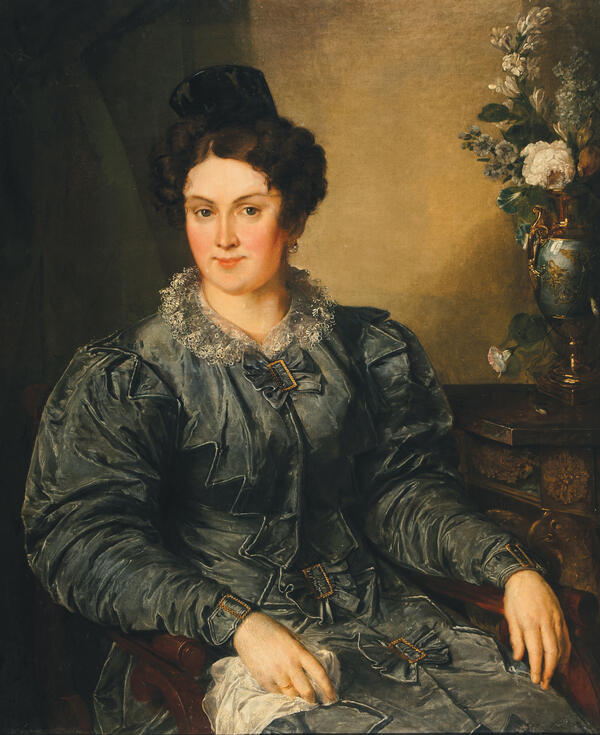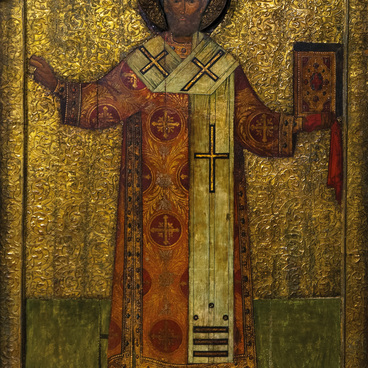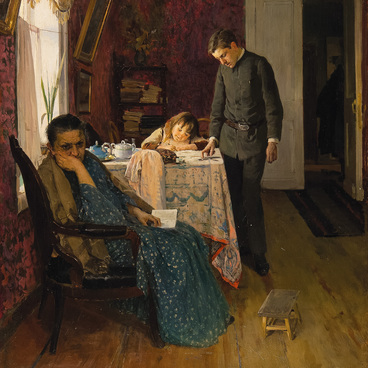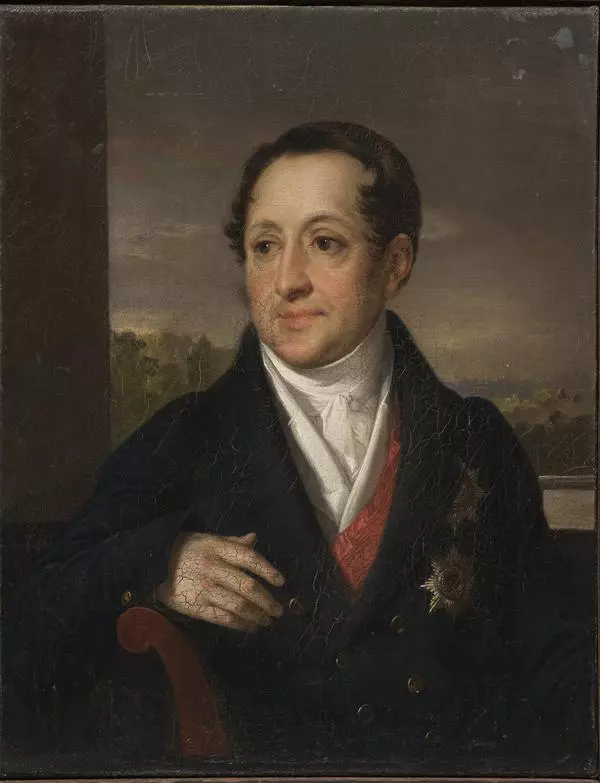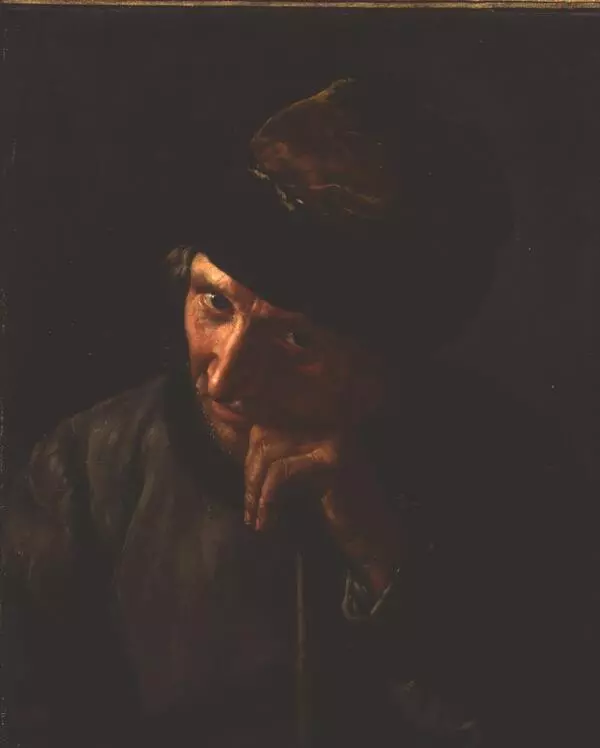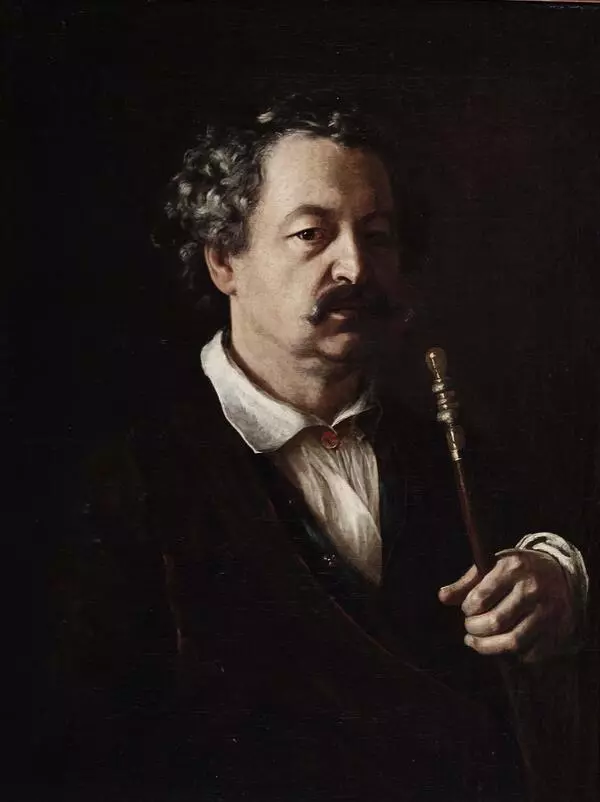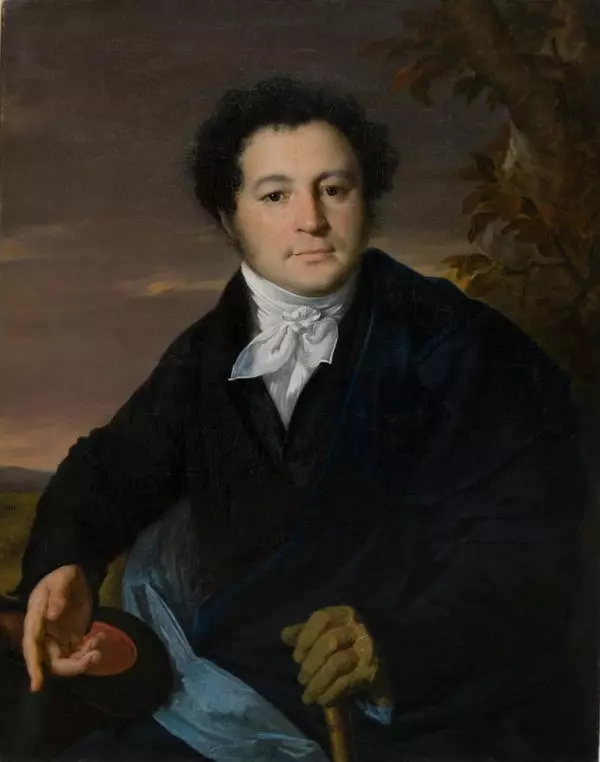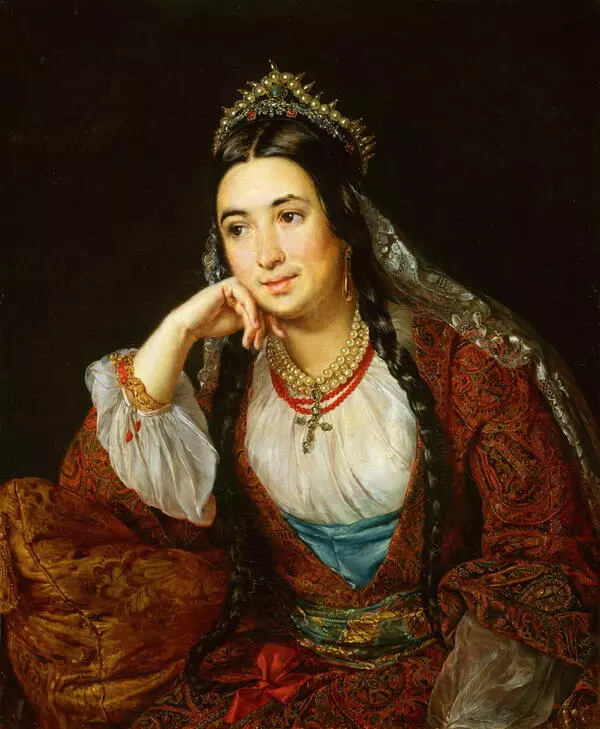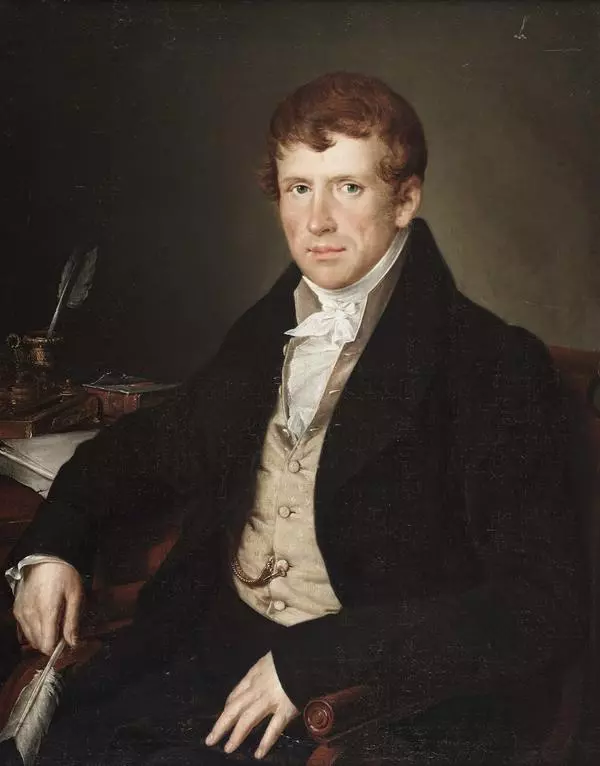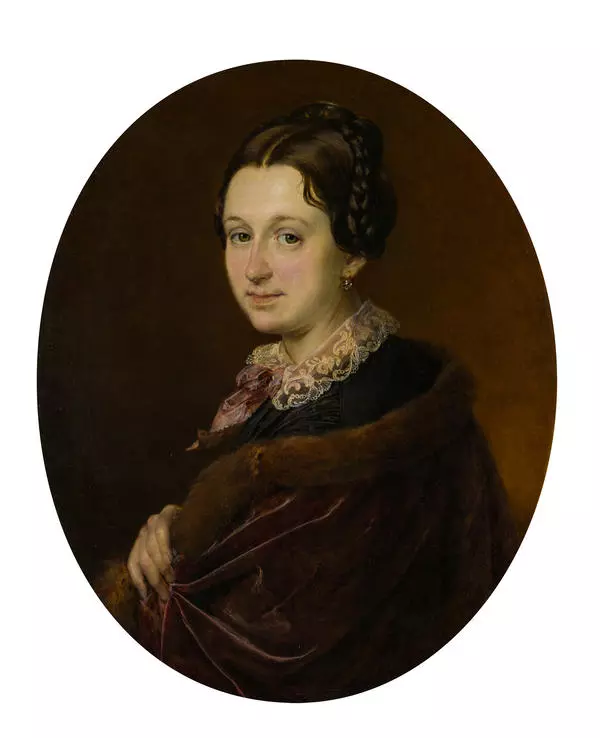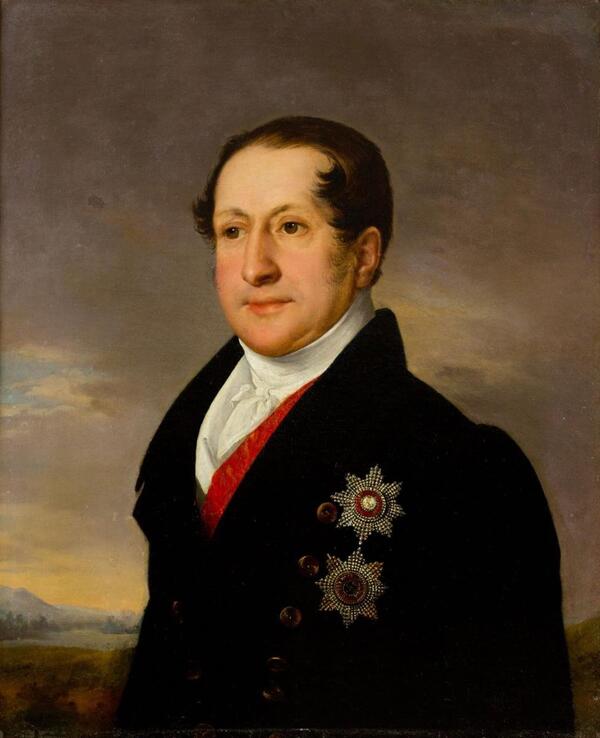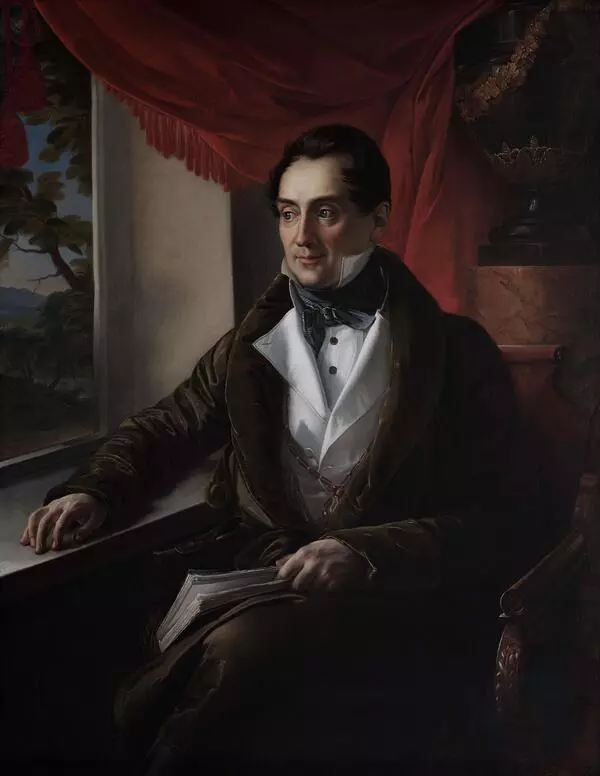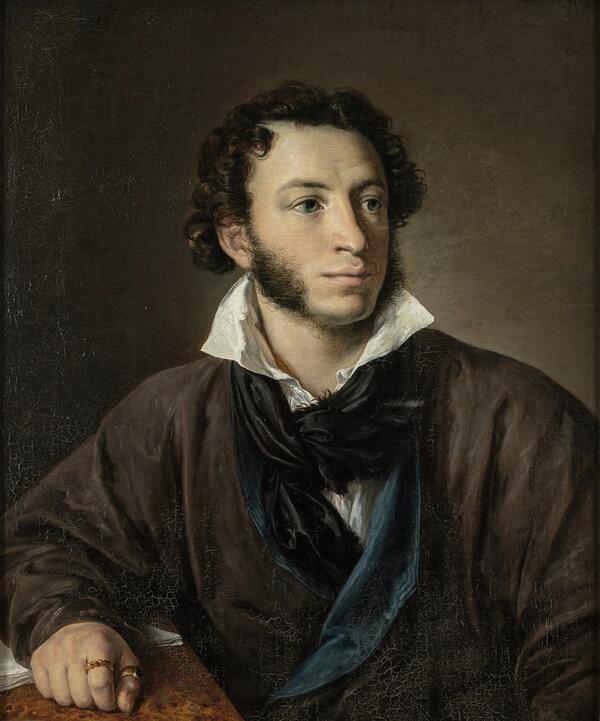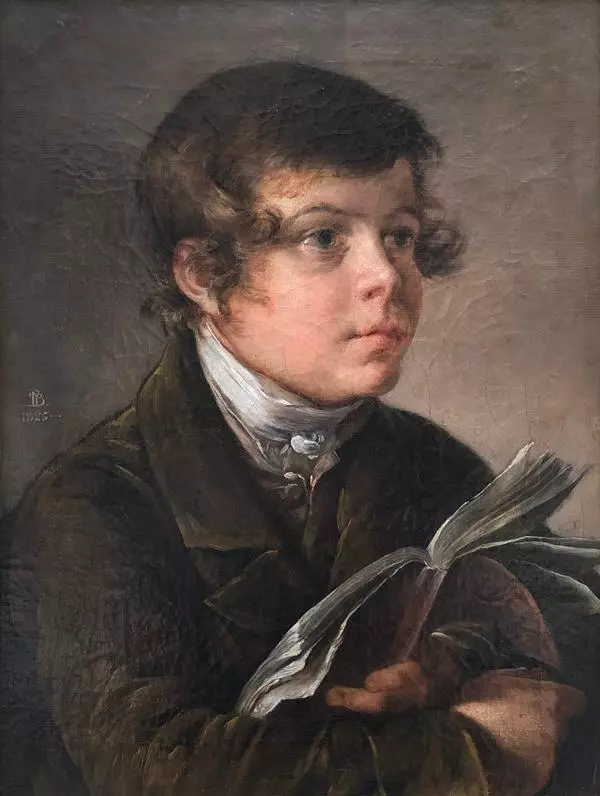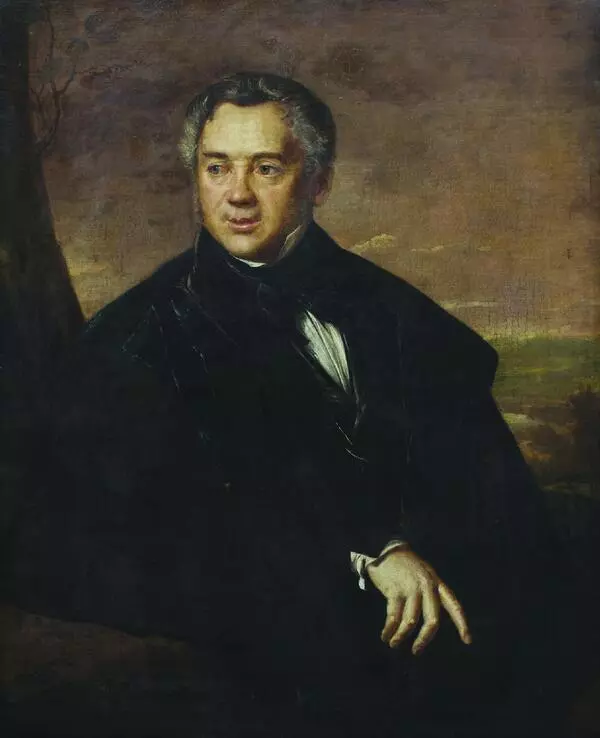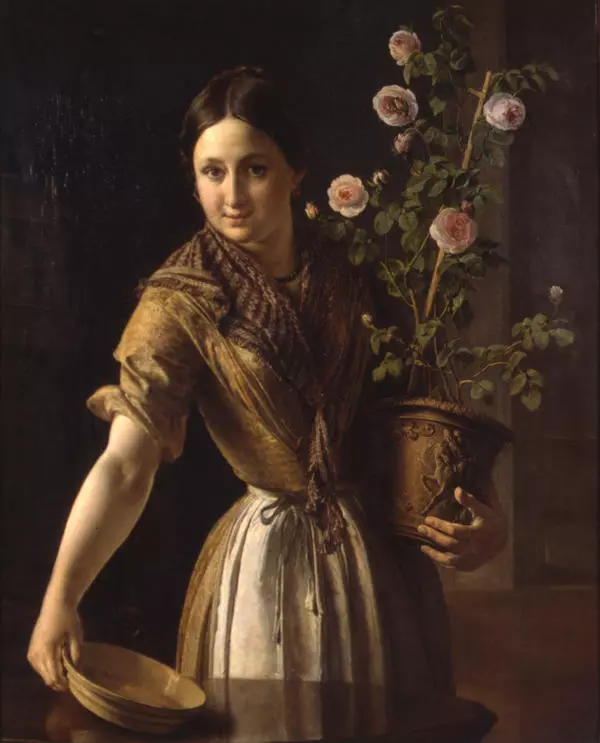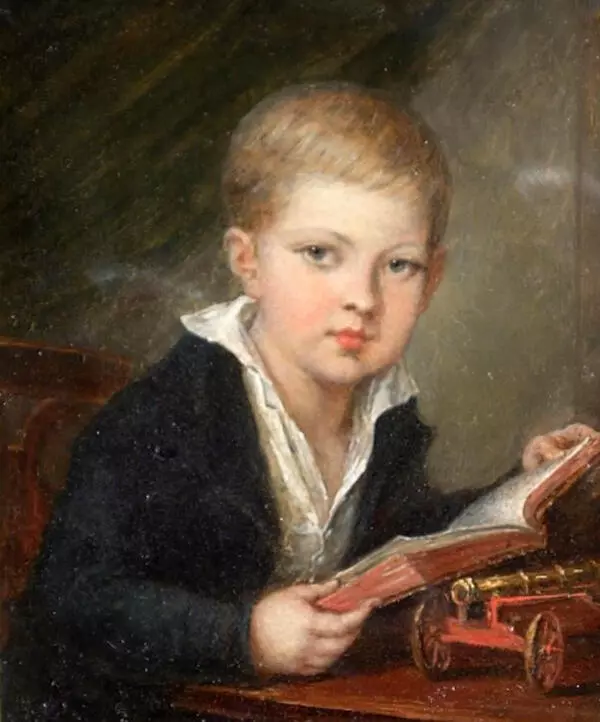Vasily Andreevich Tropinin was an outstanding artist and portraitist of the mid-19th century, a representative of the Moscow school of painting, who created masterful canvases in the spirit of Romanticism and Realism. He gave rise to a type of idealized genre portrait of a man from the people (“The Lacemaker”, “The Guitar Player”). In the 1820s–1850s, he created a whole gallery of portraits of his contemporaries, the most famous of them is the portrait of Alexander Pushkin.
In his portraits, he sought to embody the image of a person in their everyday routine. The images created by him are distinguished by simplicity, calm clarity, and truthfulness of his characterization of the model. He painted portraits commissioned not only by Moscow nobility and merchants, but also by Kaluga landowners and representatives of noble and wealthy merchant families.
In 1832, Vasily Andreevich Tropinin, created a portrait of Elizaveta Vasilyevna Meshkova, nee Bilibina, commissioned by the Kaluga merchants Meshkovs. This is a memorial portrait: it was painted four years after the death of the sitter to include it in the gallery of family portraits, which were part of the cultural tradition of the nobility and merchants in the 18th and 19th centuries. To create it, Tropinin used a miniature portrait painting created by another artist when Meshkova was still alive.
Vasily Andreevich used the type of ceremonial half-length portrait common in the mid-19th century. With great artistic skill, he depicted the iridescence of a gray silk dress and a white lace collar of a woman sitting in an armchair. The background is dominated by brownish-beige tones. Next to the armchair, on the dressing table is an exquisite vase with flowers. Tropinin achieved portrait likeness, perhaps idealizing the model, but did not convey her emotional state due to the peculiar circumstances of this portrait’s creation. The portrait is typical of the works of the 1830s and 1840s, when the composition becomes more complicated, genre features are enhanced, and the role of details increases. Vasily Andreevich paid attention to detail and created a true historical monument to the decorative and applied arts of his time.
The portrait was donated to the Kaluga Museum by the descendants of the Meshkovs in 1918.
In his portraits, he sought to embody the image of a person in their everyday routine. The images created by him are distinguished by simplicity, calm clarity, and truthfulness of his characterization of the model. He painted portraits commissioned not only by Moscow nobility and merchants, but also by Kaluga landowners and representatives of noble and wealthy merchant families.
In 1832, Vasily Andreevich Tropinin, created a portrait of Elizaveta Vasilyevna Meshkova, nee Bilibina, commissioned by the Kaluga merchants Meshkovs. This is a memorial portrait: it was painted four years after the death of the sitter to include it in the gallery of family portraits, which were part of the cultural tradition of the nobility and merchants in the 18th and 19th centuries. To create it, Tropinin used a miniature portrait painting created by another artist when Meshkova was still alive.
Vasily Andreevich used the type of ceremonial half-length portrait common in the mid-19th century. With great artistic skill, he depicted the iridescence of a gray silk dress and a white lace collar of a woman sitting in an armchair. The background is dominated by brownish-beige tones. Next to the armchair, on the dressing table is an exquisite vase with flowers. Tropinin achieved portrait likeness, perhaps idealizing the model, but did not convey her emotional state due to the peculiar circumstances of this portrait’s creation. The portrait is typical of the works of the 1830s and 1840s, when the composition becomes more complicated, genre features are enhanced, and the role of details increases. Vasily Andreevich paid attention to detail and created a true historical monument to the decorative and applied arts of his time.
The portrait was donated to the Kaluga Museum by the descendants of the Meshkovs in 1918.

